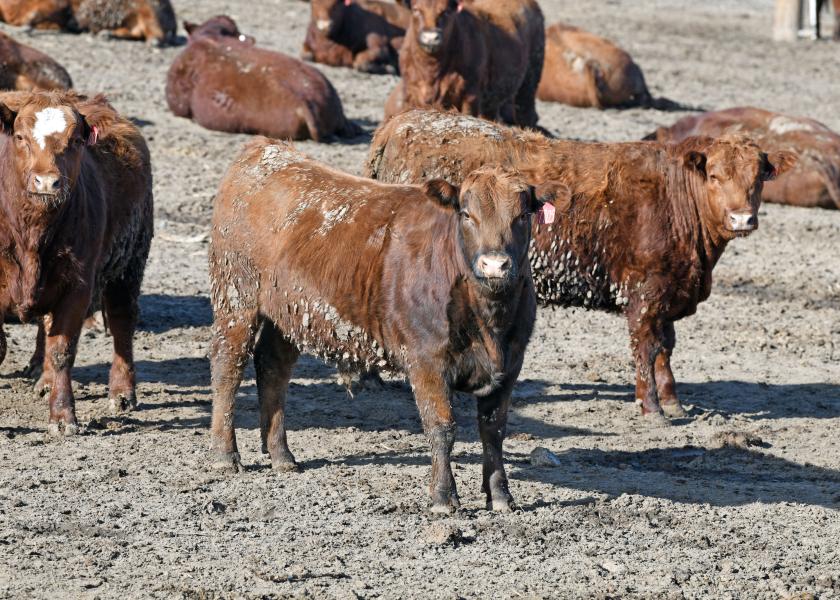Derrell Peel: Early Winter Storm And Cattle On Feed

A large winter storm is advancing across the central U.S. bringing cold temperatures and some much-needed moisture. Oklahoma is expected to see a first freeze and precipitation ranging from rain to freezing rain to ice to snow though mid-week. Farther north and west, snow and cold are blanketing much of the Rocky Mountain and plains regions. Fluctuating temperatures and cold, wet conditions add additional stress and health challenges for cattle, particularly for weaning calves and receiving stockers and feedlot cattle.
Feedlots continued to build inventories in September leading to a record feedlot total for October 1, according to the latest USDA Cattle on Feed report. September placements were 105.9 percent of last year, larger than expected and higher year over year for a third straight month.
Feedlot marketings in September were 106.2 percent of last year, slightly larger than expected. There was one more business day in September and daily average marketing were about one percent above last year. The October 1 feedlot total was 11.72 million head, 103.8 percent of last year and a record large October total for the data series back to 1996.
From July to September, the three-month total feedlot placements were up 8.5 percent year over year. In Kansas, placements were up 17.0 percent for the three months, leading to an October 1 inventory up 7 percent year over year. Nebraska placed 14.5 percent more cattle the past three months bringing the state feedlot inventory up 6 percent compared to October 1 last year. Colorado placed 9.3 percent more cattle from July to September resulting in an October 1 feedlot total up 12 percent year over year.
Texas placements were up 2.0 percent since July with an on-feed total up three percent on October 1. Iowa has placed 1.9 percent less than last year in the past three months and has a feedlot inventory down five percent compared to one year ago. Oklahoma has placed 13.4 percent more in feedlots since July and has a total October 1 feedlot inventory equal to last year.
The winter storm this week will provide a significant management and production challenge for feedlot cattle. This follows excellent feeding conditions for much of this year. The Kansas Focus on Feedlots data shows that feedlot average daily gains have been above year ago levels all year with improved feed conversions as well. Improved gains and feed efficiency have pulled feedlot cost of gain below year ago levels.
Excellent feedlot performance has contributed to heavy cattle weights thus far this year. The latest weekly data on steer carcass weights are at 928 pounds, up 27 pounds year over year. Heifer carcass weights are at 846 pounds, 17 pounds above this time one year ago. Carcass weights should reach a seasonal peak in late October or early November and may match or exceed previous record levels. Steer carcass weights reached a record 930 pounds the week of October 17, 2015. Year to date average steer carcass weights are well above the previous record level in 2015 and will no doubt reach a new record level in 2020, above 900 pounds for the first time.
Related stories:
Cash Cattle Lower, COF Inventory Higher







